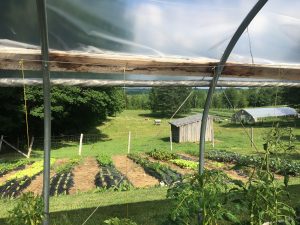
Bagels: During this three-day timeframe, one thing I ate everyday was a bagel. The first ingredient listed on the plain bagel package is enriched wheat flour. This type of flour is called enriched flour, because it goes through an enrichment process. During the milling process the natural nutrients from wheat are lost. This process adds several nutrients, such as minerals and vitamins, to back into the refined flour. These nutrients are niacin, thiamin, riboflavin, folic acid, and iron. Enriched wheat flour starts off as wheat. Since China is the largest producer of wheat, for this product I’ve made the assumption the wheat was grown in China. Other areas wheat is commonly grown in are India, Russia, and the United States, to name a few. Once the wheat is cultivated it is either transported by barge, rail, or truck. From there it is stored, separated and put through a thorough process. This process consists of removing unnecessary material, removal of impurities, and eventually the grinding, purifying, and sifting into different flours. My assumption is that the cultivation of the wheat creates large environmental impacts in the process. The cultivation of wheat involves fertilizers that contribute to greenhouse gas emissions. I also think that the tilling of the soil and irrigation create other environmental problems as well. Another energy-intensive aspect in order to create this ingredient is the electricity and power for the production facilities. In order to calculate the food miles to get a bagel on my plate, I found a food miles’ calculator. This calculated roughly how many miles it took for enriched flour to arrive in the US. After this calculation I think the food miles for my bagel would be roughly 7500 miles. However, this is an estimate that mainly take into account the miles from China.

Baby Carrots: Another food I ate every day and more than once each day was carrots, usually baby carrots. Carrots only consist of one ingredient, and that’s carrots. I was surprised to discover that most of the US grown carrots are grown in California. The process of producing baby carrots is by first harvesting full-sized carrots from the fields. Once they are harvested they are washed, sorted, sized, cut, peeled, and polished. Smaller carrots are processed, shaped, and packaged. The pesticides used on carrots crops, like other crops, cause damage to the environment. The production process of the carrots is energy intensive, thus adding to harmful environmental impacts. However, baby carrots have the flexibility to use more of the carrot resulting in wasting less carrots. Carrots can be sold locally, but are often packaged in many different ways. Most commonly seen in stores are the bags of baby carrots, other products are snack size ranch with baby carrots or thrown into a plastic to-go snack kit. After comparing a few different food mile websites for carrots, I am thinking roughly 2000 miles to reach my refrigerator. Similarly, to the bagel this estimate doesn’t include the miles that the carrots gain during the processing and packing process.

Dried Mangos: The last food item I choose from my list was dried mango slices. These dried mangos don’t have any added ingredients; they are just dried mangos. I bought these dried mangos from Trader Joe’s and the package claims the mangos are a product of Mexico, which makes sense since they are one of the top producers of Mangos. Once the Mangos are grown and picked from their trees, they are carefully selected. The mangoes used for drying purposes are the ones without damage, pests, and have a good overall appearance. From there the mangos are trimmed and washed. Once they have been cleaned well, each mango is peeled and cored. Out of these steps, from my understanding, there isn’t too much human involvement. However, the cutting of the mangos is sometimes performed by many people. Finally, the mangos go on to blanching, to be sterilized, drying, and packing. These steps can be pretty energy intensive, resulting in the release of greenhouse gases into the environment. The online calculation I found for dried mangos was roughly 5500 miles.









Recent Comments